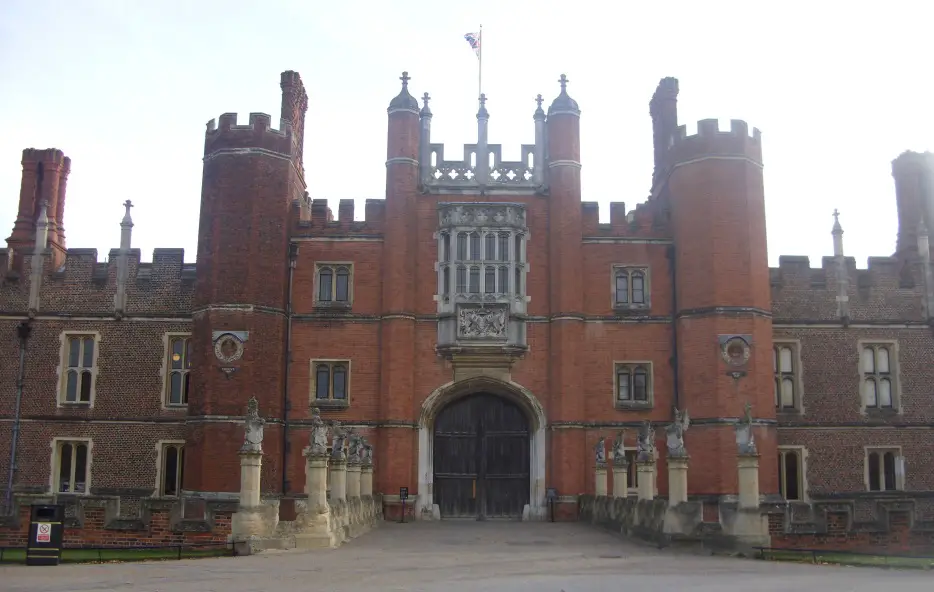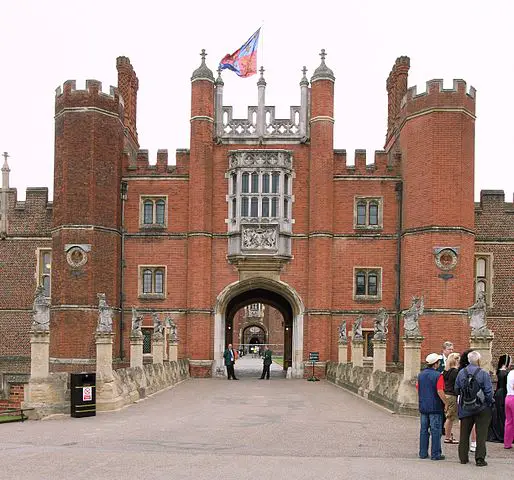 In my last post - see What is the Order of the Garter? - I wrote about the Most Noble Order of the Garter, whose spiritual home is located at St George's Chapel at Windsor Castle. In 2009 I had the honour of visiting St George's Chapel and Windsor Castle and learnt a great deal about the fascinating history of this magnificent castle.
In my last post - see What is the Order of the Garter? - I wrote about the Most Noble Order of the Garter, whose spiritual home is located at St George's Chapel at Windsor Castle. In 2009 I had the honour of visiting St George's Chapel and Windsor Castle and learnt a great deal about the fascinating history of this magnificent castle.
Windsor Castle dates back to the time of William the Conqueror, who started building the Castle in 1070. Work was completed in 1086 and the great castle was built as a means to defend and secure the western path towards London. The castle was built on an earth mound which supported a keep and has an Upper and Lower Ward.
Over the next several hundred years the castle of Windsor was rebuilt and developed. The initial keep built by William the Conqueror was replaced with the Round Tower in 1170. King Henry II also replaced the wooden walls surrounding the castle with an outer wall of stone. Edward III and his great-great-grandson Edward IV had the greatest influence in building the Castle of Windsor as we know it today. Edward III transformed Windsor Castle from a defence castle to a grand Gothic Palace. Under the guidance of Edward III, William of Wykeham, Bishop of Winchester oversaw the building of many new structures within the castle including an inner gatehouse with cylindrical towers and the building of royal apartments on the north side of the Quadrangle.
Edward III also founded ‘The Order of the Garter’, the oldest surviving order of chivalry in England. In addition to this he founded the College of St George, St George being the patron saint of the Garter. However the building of the current St George's Chapel did not begin until 1475 under Edward IV, great-great-grandson of Edward III. It was within this chapel that Edward IV chose to be buried. Before the St George Chapel was built, Catholic mass was held at Henry III's Chapel which is nowadays called the Albert Memorial Chapel.
During the dissolution of the monasteries in the mid 1530s in the reign of Henry VIII, St George's Chapel was made exempt and remained untouched. In addition to this, the Chapel remained untouched during the English Civil war when King Charles I and his men fought against Oliver Cromwell and his men. Some churches during this dramatic time in England were damaged but luckily St George’s Chapel was not touched.
Within St George’s Chapel is The Quire where the stall plates of current and former members of the Order of the Garter can be seen. Every person that holds an Order of the Garter is required to display their banner of arms, helmet, crest and sword as well as a stall plate within the stalls of St George’s Chapel. Upon a Knight or Ladies death their banner of arms, helmet, crest and sword are removed, leaving only the stall plate. The Stalls at St George’s Chapel contain over 700 stall plates dating back to 1348. In addition to this the vaulting of the Nave which was completed in 1506 displays the heraldic arms and badges of The Knights of the Garter from period.
The Tudor monarchs also left their mark upon Windsor Castle and specifically St George’s Chapel. Henry VII continued the work that Edward IV had begun upon St George’s Chapel and also rebuilt Albert Memorial Chapel. Henry VII’s son Henry VIII oversaw the building of a wooden oriel window within the Quire of St George’s Chapel so that his first wife Queen Katherine of Aragon, could view the mass. He also added a large stone gate at the bottom of the Lower Ward which bears his name.
Henry VIII was buried next to his third wife Jane Seymour in a vault underneath the middle of the Quire in St George’s Chapel. In his will he had planned for a large monument to be created in his memory within St George’s Chapel but unfortunately this never eventuated and all that marks the King’s burial place is a marble slab bearing his name on the floor of the Quire. Some other personalities from the time of the Wars of the Roses and the Tudor reign that are buried within the Chapel include Edward IV and his wife Elizabeth Woodville, grandparents of Henry VIII, and the Tudor King’s closest friend, Charles Brandon, Duke of Suffolk.
During the reign of Charles II the English King oversaw the refurbishment of the royal apartments. Charles II appointed Hugh May to this lead this task which was finally completed in 1674 and Windsor Castle quickly became one of Charles II's favourite palaces.
George III also modernized Windsor by appointing James Wyatt to restore the external facades and to create a new grand staircase within the State Apartments. George IV continued his father’s work by heightening Henry II’s Round Tower, creating a gallery between the apartments on the south and east sides of the castle and building a new entrance and staircase in the State Apartments on the north side of the castle. George IV went on to spent nearly £300 000 on his gothic transformation of Windsor Castle.
In 1848 Queen Victoria declared that the State Apartments would be opened to the public.
In 1992 a fire started in Queen Victoria’s private chapel. It is believed to have started from the heat of a spotlight igniting a curtain. The fire swept through the roof spaces of Windsor Castle destroying the ceilings of St George’s Hall and the Grand Reception room. It destroyed the private chapel, State Dining Room, Crimson Drawing Room and many other smaller rooms. It took fifteen hours and two hundred fire fighters to eventually put out the fire. Repair and restoration work was started immediately and was finally completed on 20th November 1997.
Windsor Castle is one of the official residences of Queen Elizabeth II. Whenever the Queen is in residence at Windsor the Royal Standard flag is flown above the Round Tower.
Sources
- Dean & Canons of Windsor 2015, St George’s Timeline, College of St George, viewed 19 January 2015, <http://www.stgeorges-windsor.org/about-st-georges/history/st-georges-timeline.html>.
- Dean and Canons of Windsor 2008, St George’s Chapel Windsor Castle, Scala Publishers Ltd, London.
- Marsden, J and Winterbottom, M 2009, Windsor Castle Official Souvenir Guide, Royal Collection Enterprises Ltd, St James’s Palace, London.
Main photo: "Windsor Castle at Sunset - Nov 2006" by Diliff - Own work. Licensed under CC BY 2.5 via Wikimedia Commons - http://commons.wikimedia.org/wiki/File:Windsor_Castle_at_Sunset_-_Nov_2006.jpg#mediaviewer/File:Windsor_Castle_at_Sunset_-_Nov_2006.jpg





Bonjour,
Je m’intéresse beaucoup à l’histoire de l’Angleterre parce que je ne l’ai malheureusement pas apprise à l’école. Voir l’endroit où les lieux où l’histoire anglaise s’est écrite est très impressionnante. Je remercie tous ceux qui font que cela est possible. Je ne suis sûrement pas la seule à aimer votre histoire.